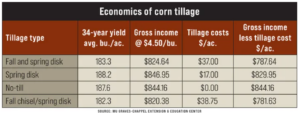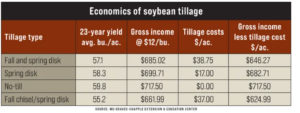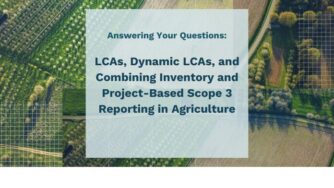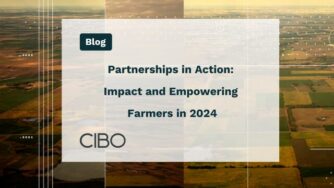Awareness of no-till and conservation tillage practices is extremely high (90%) among farmers, according to the latest McKinsey report. Yet despite good awareness, adoption remains low and growth is slow. SuccessfulFarming reports, “Only 21% of farmers report using no-till continuously, according to the 2022 farm census, and about a third alternate reduced tilling with conventional tilling, showed a 2018 USDA report.” The slow adoption stems from concerns about profitability, yield loss, and access to transition funding to de-risk the year to year cost of new practice adoption.
However, a new, multi-decade study from the University of Missouri, as reported by FarmProgress, has extremely good news for farmers considering no-till for corn and soy.
Importantly, over 34 years of studies on corn and over 20 years of study on soy show that yield is not statistically different between the different tillage systems (disk, chisel, no-till), and the profitability of no-till corn and soy far outpaces other tillage practices. Notably, the multi-decade study controlled for commodity prices, fertilizer, herbicide, seed, planting, and harvest dates.


Even in drought years, no-till outperformed its conventional tillage counterparts, creating better returns for farmers.
The financial savings accrued through no-till farming comes from the absence of tillage costs. This is no surprise. More surprising is the finding that there was no material yield drag over the studied years. The results are clearly superior profitability of no-till plots compared to conventional tillage systems. Over three decades of corn trials no-till plots have consistently yielded higher gross incomes per acre. Soybean data spanning more than 20 years demonstrated the same trend.
While data and good intentions alone are not enough to persuade all farmers that adopting no-till practices will work on their own farms, hearing success stories from fellow farmers can be a powerful motivator. McKinsey found that “Adoption of practices is highly correlated with farmers’ perceived ROI (See the report here)” In an interview with Forbes, McKinsey report co-author Vasanth Ganesan said, “ In terms of encouraging more farmers to make the change, Ganesan added transition financing remains a big topic, along with estimating any perceived risk of yield impact and its effect on operating costs.” This sentiment was echoed by the other lead author of the report, David Fiocco on a panel at the World AgriTech conference held earlier in San Francisco this year. You can view a recording of the CIBO Technologies hosted panel here.
CIBO is making it easier for farmers to adopt sustainability practices and access incentive program dollars by presenting them a slate of incentive programs from both public and private sources for which they and their land may qualify. By seeing all the options in once place and accelerating the application process, CIBO relieves the application and financial burden on farmers while removing the management and reporting burden from the program sponsors. When programs allow, farmers may be able to stack incentives from public and private sources further de-risking the transition to regenerative farming. As the data above show, the promise of regenerative practices is increasingly certain, it remains for stakeholding companies and governments to lean in and support farmers’ transition and it remains for farmers to sieze the opportunity for program participation with confidence.
CIBO is here to help.



